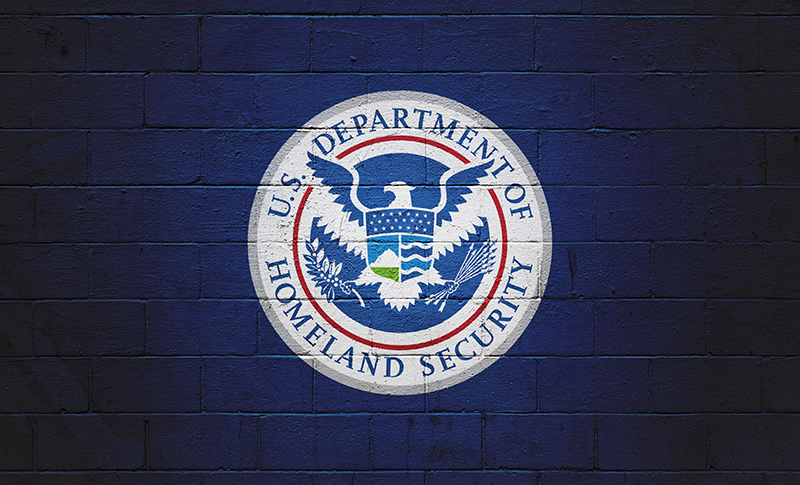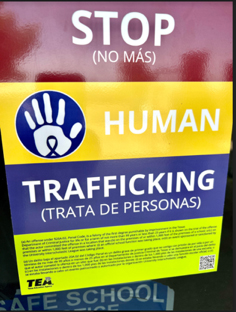DHS to End Covid-Related Work Authorization Verification Flexibilities
The U.S. Department of Homeland Security (DHS) announced recently that it will be ending the work authorization verification flexibilities the agency put in place to allow many employers to defer the physical examination of identity and work authorization documents of their new hires. These flexibilities have allowed many employers to inspect such documents remotely (e.g., over video, fax, or email), rather than in-person as regulations require.
Most employers are not trained to verify the authenticity of government-issued identification or work authorization documents, and must generally accept documents as valid when presented to them by recent hires. After the initial inspection, an incredibly few completed Form I-9s are ever revisited for audit compliance. This means that the Form I-9 verification process is vulnerable to fraud and abuse by both unauthorized workers and unscrupulous employers intending to exploit unauthorized labor.
Remote document examination increases these vulnerabilities by increasing the likelihood that an employee will present fraudulent documents to support their claim of work authorization. Equally troubling, the remote verification flexibilities will give corrupt employers additional cover to knowingly hire unauthorized workers in violation of statute.
Federal law, at 8 U.S.C. § 1324a(a)(1)(B), requires employers to verify the work authorization of their new hires by completing the Form I-9 and examining documents establishing both the worker’s employment authorization and identity. DHS regulations, 8 C.F.R. § 274a.2(b)(1)(ii)(A), further require that employers “physically examine” such documents and then attest that the documents appear to be genuine and relate to the person presenting them. If the individual submits a document that does not reasonably appear to be genuine or to relate to him or her, the employer must reject that document and may then request that the individual present other acceptable documents to satisfy the requirements of Form I-9. Federal law also requires employees to attest, under penalty of perjury on the Form I-9, that they are a citizen or national of the United States, an alien lawfully admitted for permanent residence, or an alien who is authorized to be hired, recruited, or referred for employment.
After Covid-19 was declared a National Emergency on March 13, 2020, DHS announced that it would defer the in-person inspection requirements associated with the Form I-9 verification process. DHS permitted employers with employees working remotely due to Covid-19 to examine their employees’ identity and employment eligibility documents remotely rather than in-person. DHS initially applied this guidance only to employers and workplaces that were operating entirely remotely, but has extended remote document verification flexibilities for any recent hire who worked exclusively in a remote setting due to Covid-19-related precautions, regardless of whether the workplace was operating entirely remotely.
DHS extended these leniencies repeatedly through fiscal year 2023. The most recent extension is set to expire on July 31, 2023.
DHS’s Forthcoming Work Authorization Regulation
DHS is expected to publish a new regulation this summer that would provide permanent authorization to the secretary of Homeland Security to modify the work authorization verification process. Specifically, in a proposal that was published in August 2022, DHS proposed regulatory language that would formalize the authority for the secretary of Homeland Security to “extend flexibilities, provide alternative options, or conduct a pilot program to further evaluate an alternative procedure option”. The agency cited the “rapid shift to telework and remote work” in response to the Covid-19 pandemic as the primary incentive for proposing this rule, stating that the department recognizes that many employers have maintained these flexibilities with their staff “by choice rather than necessity”. As a result, DHS reported exploring “making permanent some of the COVID-19 pandemic-related flexibilities” to examine employees’ identity and employment authorization documents for the Form I-9, as well as other alternatives.
Mandatory E-Verify Expansion Must Be Included in Any Work Authorization Verification Plan
CIS strongly recommends that DHS modernize the work authorization verification process by requiring all employers to use E-Verify. The E-Verify system provides employers with a quick, simple, and accurate way to verify the work authorization of new hires using an online system maintained by DHS and the U.S. Social Security Administration (SSA). By allowing employers to confirm the work authorization of their new hires by matching the documents with DHS and SSA records, employers are able to quickly and easily confirm that the documents provided by a new employee have been issued to them and have not been altered. Since using the E-Verify system is free, the personnel costs associated with data-entry are the only burden it imposes on businesses.
Currently, federal rules only require government employers and contractors to use E-Verify to confirm that their employees are authorized to work in the United States. As of May 2023, 21 states and numerous localities require all or some employers in their jurisdictions to use E-Verify, proving the feasibility of mass implementation. At a minimum, DHS should make E-Verify participation a prerequisite for any employer seeking to use an alternative work authorization procedure, such as remote document inspection, authorized by this or any future rulemaking.
DHS Must Also Resume and Expand Worksite Enforcement Efforts
Eradicating unauthorized employment is essential to enforcing both immigration and labor laws as a whole. As civil-rights icon Barbara Jordan — chairwoman of the Clinton administration’s Commission on Immigration Reform — explained in 1994, “Employment continues to be the principal magnet attracting illegal aliens to this country. As long as U.S. businesses benefit from the hiring of unauthorized workers, control of unlawful immigration will be impossible.” For this reason, the commission concluded “that both employer sanctions and enhanced labor standards enforcement are essential components of a strategy to reduce the job magnet.” By reducing incentives to enter or remain in the United States illegally, effective worksite enforcement likewise allows DHS to focus its resources on its stated enforcement priorities: criminal aliens and aliens who pose threats to border or national security.
As many workers understand too well, employers who hire unauthorized workers often violate other employment and labor laws, including those related to anti-discrimination, health, and safety. DHS itself acknowledged in 2021 that, “These employers engage in illegal acts ranging from the payment of substandard wages to imposing unsafe working conditions and facilitating human trafficking and child exploitation. Their culpability compels the intense focus of our enforcement resources.” Equally important, unchecked unauthorized employment causes substantial economic hardship to U.S. workers who may face unfair labor competition, wage suppression, and reduced working conditions as a result of contending against an illegal and unregulated labor market.





